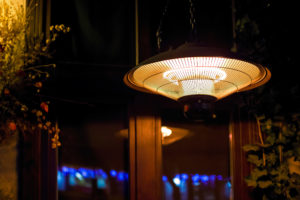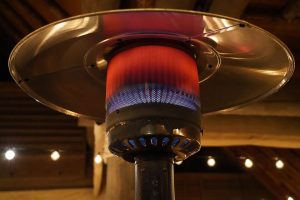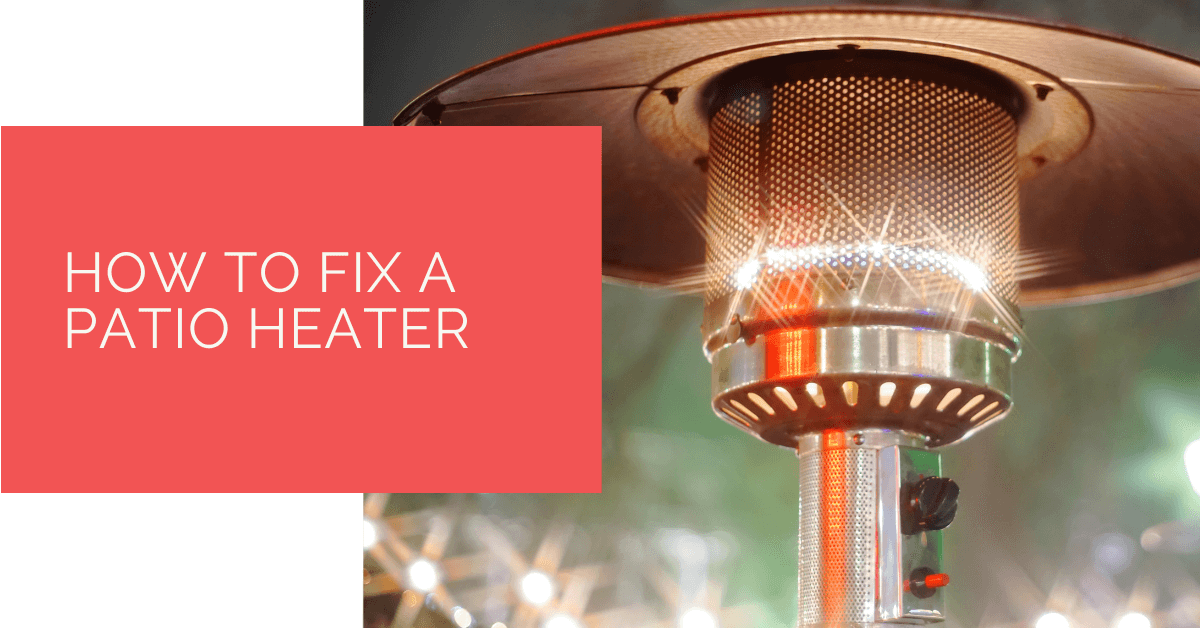Is your patio heater not functioning correctly? Using your patio heaters regularly in the chilly evenings can burn out its switches, regulators, igniters, and valves.
Fortunately, you have access to an ample supply of patio heater spares to ensure that your units continue to function correctly year in and year out.
If you’re one of the many individuals who purchased their first patio heater this year, here’s how to deal with some of the most typical issues.
Read on to learn a few practical and straightforward patio heater repair techniques, whether you have propane, natural gas or an electric patio heater.
Contents
Key Takeaways
- Various types of patio heaters include floor or free-standing, tabletop, and wall-mounted options, each suitable for different outdoor spaces.
- Patio heaters can be powered by propane, electricity, or natural gas, and the choice depends on factors like availability and heating needs.
- Common patio heater issues, such as low flame burners, carbon buildup, regulator problems, and ignition issues, can be addressed with specific troubleshooting steps outlined in the article.
Different Types of Patio Heaters
Explore through the various varieties of patio heaters to choose the one that perfectly aligns with the size and style of your patio, allowing you to sit outside and enjoy the weather even during the coldest months of the year.
Floor or Free Standing
These heaters, comparable to those seen in a restaurant or bar patio, are perhaps the most prevalent type of patio heater. They are practical because they can be put up almost everywhere outside as long as they have access to fuel.
Tabletop
Tabletop heaters are a terrific way to add warmth to your patio table while you unwind and relax with your guests.
They often resemble smaller versions of floor or free-standing patio heaters, and some are even designed to resemble outdoor table lamps, extending your indoor living area to the outdoors in the same way that floor heat lamps do.

Wall-Mounted
Wall-mounted heaters are a convenient method for having a heating element that is entirely out of the way and enables you to enjoy your patio fully.
These are an excellent alternative if you need a patio heater but don’t have enough room.
Types of Fuels for Patio Heaters
Take into account the fuel source of a patio heater while making your selection. Operating costs, natural gas connections, access to power outlets, the heat radius, and the floor area you have to cover all play a role in determining which source of fuel is best.
Propane
The most frequent source of fuel for patio heaters is propane. Propane comes in conveniently transportable tanks, making it the most versatile heater because it can be used almost anywhere.
Several propane heaters include a wheel kit that may be bought separately for convenience and portability.
Electricity
Electric heaters are an excellent substitute for propane heaters if you don’t have access to natural gas and don’t want to fret about purchasing or replenishing propane tanks.
Natural Gas
You can employ a natural gas patio heater in your outside space if you have access to an outdoor natural gas outlet. Like outdoor propane heaters, these have a higher British Thermal Unit (BTU) range and can thus heat a more extensive area.
Troubleshooting a Patio Heater
Here are some tell-tale symptoms that your patio heater is damaged:
- The heater will not turn on
- A gas patio heater will not turn on using the ignition switch, but it may be lighted with a match or lighter
- After a few minutes, the heater turns off on its own
- Heat output or flame production are reduced
Common Issues and their Solutions
If you’re facing any of the problems mentioned above, see if one of the following concerns is to blame and discover the correct method of fixing it.
Low Flame Burners
Low flame burners can be caused by a lack of gas pressure, a kinked or bent supply hose, or an obstruction in the pilot tube or orifice.
To fix this, you must replace the Cylinder’s valve after turning it off; straighten the hose; and inspect the burner ports, venturi tube, and pilot assembly valve for insects, which must be removed.
When the outside temperature is below 40°F, and the tank is less than 1/4 full, the odds of a low flame are considerable; in this scenario, a full cylinder must be used.
Clearing Carbon Construct in the Pilot Tube
Remove the mesh surrounding the pilot button and igniter and the bolts on the top and bottom of the panel.
You’ll be able to see the unit’s innards while you do this, which is known as pilot tube adjustment in mechanical terms.
Carbon build-up inside the brass tubing prevents the propane from reaching the top, ensuring cleanliness.
The Regulator doesn’t Fit onto the Cylinder
This problem is most likely caused by the fact that you are not using the correct gas cylinder. It should be fixed instantly.
Freezing Up of the Regulator
Liquid propane flowing through the control device is one of the more difficult challenges that might cause a regulator to freeze up.
In that case, you’ll need to ensure that tanks and cylinders are correctly positioned and aligned so that propane vapour does not enter the regulator.
Given that this is incredibly complicated and these circumstances can’t always be brought about, it is necessary to seek expert guidance.

Patio Heater not Lighting
Whether your patio heater isn’t lighting, check to see if you’re getting a fire on the igniter’s head. If that’s the case, check if the pilot light is on; if it isn’t, look for any blockages.
Remove the emitter and ignite the pilot light manually while keeping the control knob in the pilot mode. If this doesn’t work, warm up the thermocouple for about 30 seconds while still gripping the knob, turning the knob to low flame and igniting the main burner.
Please turn it on full for 5 minutes when it gets light. As a result, the dust blockage will be removed or burned away, and everything should be fine.
Heat Pump Source: Reliable Heating and Cooling Solutions
At Heat Pump Source, we take pride in our unwavering commitment to serving the UK with top-tier HVAC solutions. From the efficiency of heat pumps and the cool relief of air conditioning to the warmth of boilers, radiators, and underfloor heating, our dedicated team is always at the forefront of innovation. We understand the unique needs of every household and business, and we strive to provide dependable health and cooling products and services that are tailored just for you. Ensuring your comfort and satisfaction is our utmost priority. Whether you have questions, need guidance, or require support, we’re always here to assist. Please don’t hesitate to contact us; we’re eager to be of service.
Final Words
Patio heaters are worth the investment as they are an excellent supplement to your lawns or outside areas if you need some additional warmth on those balmy afternoons or want to render a lasting impression.
Regardless of the kind of heater you have, whether it’s propane, natural gas, or electric heater, each has its own set of troubleshooting methods, so always consult the handbook for basic safety instructions.
About the Author
At Heat Pump Source, our articles are the product of a collaborative effort among a team of highly skilled HVAC experts. Our dedicated professionals, hailing from diverse backgrounds in heating, ventilation, air conditioning, and refrigeration, contribute their extensive knowledge and experience to every piece of content. This multidisciplinary approach ensures comprehensive coverage. Our commitment is to deliver authoritative, reliable, and tailored advice to meet the unique needs of every household and business across the UK.

